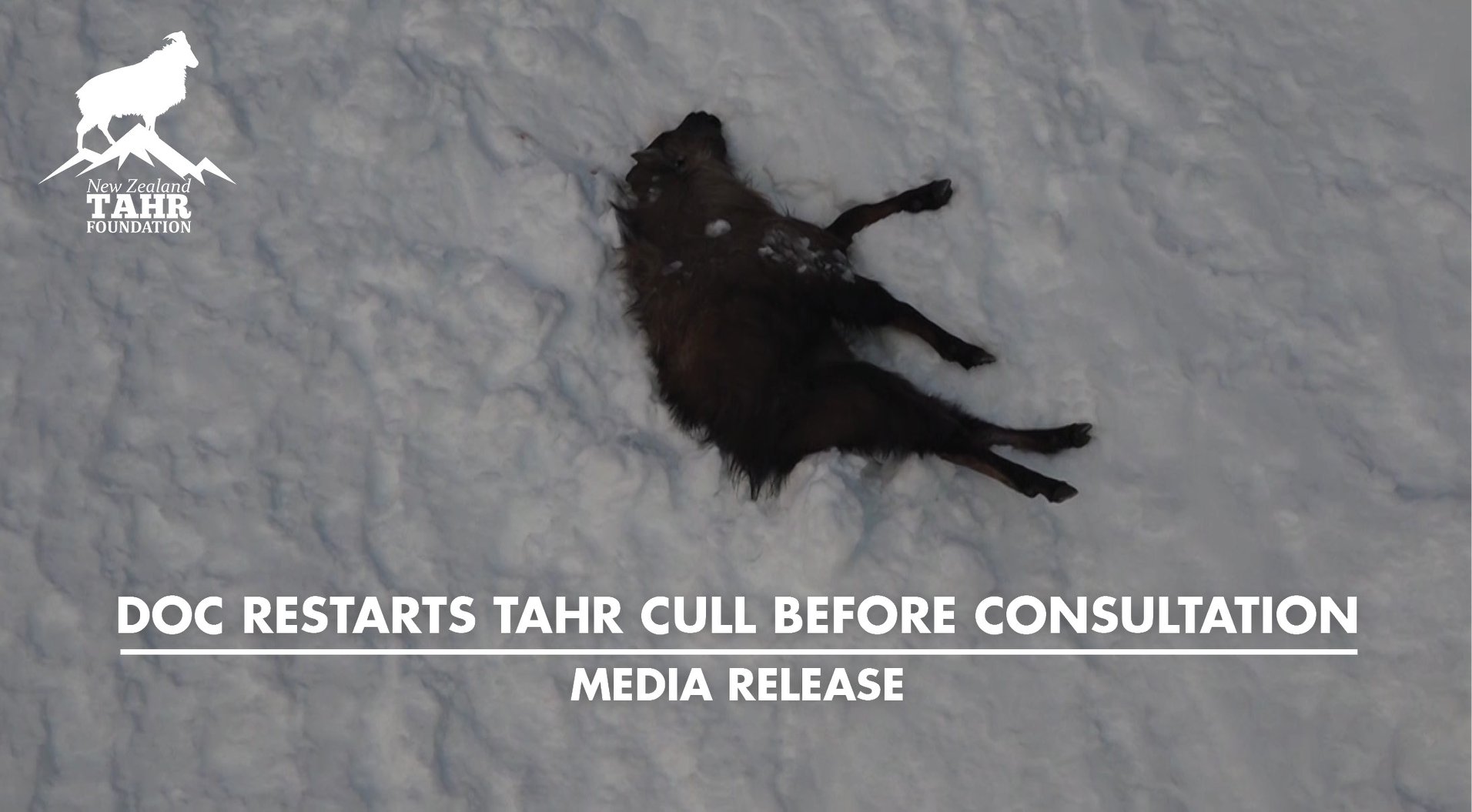DOC RESTARTS TAHR CULL BEFORE CONSULTATION
17 July 2020
FOR IMMEDIATE USE
DOC have begun killing tahr in Aoraki/Mt Cook and Westland Tai Poutini National Parks before undertaking consultation with the hunting sector and it is another kick in the guts says the NZ Tahr Foundation.
The killing of bull tahr in Aoraki/Mt Cook and Westland Tai Poutini National Parks has always been the most controversial part of the culling programme.
“Mature bull tahr in our national parks are the ultimate recreational and commercial resource and worth up to $14,000 each to the economy so we are quite frustrated that DOC have chosen to do this part of the operation before consultation has begun,” says the Tahr Foundation’s Willie Duley.
“While we acknowledge that last week’s High Court decision gave DOC the right to begin culling before consultation, we hoped they would have given the hunting sector the chance to have a say before starting with the national parks.”
“Tahr hunters regard Aoraki/Mt Cook and Westland Tai Poutini National Parks as the pinnacle of the Kiwi alpine hunting experience. To have this taken away without even being consulted is a very bitter pill to swallow.”
“Contrary to what DOC claims, there is no conservation imperative for this, especially to target bulls as the bulls don’t have kids. This will have a far bigger impact on peoples’ livelihoods than what DOC are suggesting. They have not even considered the effects on the huge recreational hunting sector and the retail industries that rely on it”
“It would have been an act of good faith for DOC to have prioritised the control work outside the feral range that all stakeholders agree needs to happen. That is uncontroversial and vital to preventing tahr spreading to surrounding landscapes,” says Duley.
“We are also worried that many recreational tahr hunters and other backcountry users currently in the mountains are unaware DOC have restarted their helicopter culling operations. We have had contact with local operators that have hunters potentially in close proximity to tahr in and around the national parks, that are concerned at the safety risk this presents.”
DOC’s restarting of culling operations brings into stark focus just how important it is that the long-out-of-date 1993 Himalayan Tahr Control Plan is reviewed and an acceptable long-term management strategy put in place.
“I’m sure I can speak for all stakeholders when I say we are sick of the almost annual conflict that the 1993 Plan and DOC’s failure to review it has created,” says Duley.
“The 1993 Plan was put in place as a best-guess at a time when little information was really known about tahr in our alpine environment. The intention stated within the Plan was for it to be reviewed and updated as more science and information was developed.”
“DOC have never undertaken the proper research on vegetation impacts, herd densities and the contributions of recreational and commercial hunting that are necessary to inform future management. Instead they focus on short-term culling programmes like what is happening right now that pit the various stakeholders against each other.”
“The reality is that there is a huge amount of common ground among stakeholders. We all agree that tahr must be eradicated outside their feral range, we all accept that some form of management is required and yet we also know that tahr are an extremely precious recreational and commercial resource,” says Duley.
“Those are solid foundations to build an enduring management regime upon.”
Over 50,000 people have signed the Tahr Foundation’s petition calling for a halt to the cull and hundreds are expected at the hunter-led Tahr Jam protest drive from Lake Pukaki to Aoraki/Mt Cook on Sunday.
ENDS
CONTACT:
Tahr Foundation Spokesperson - Willie Duley: 0273338424 / willie@nztf.org.nz
Tahr Foundation President – Snow Hewetson: 0274122772

